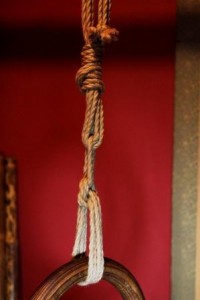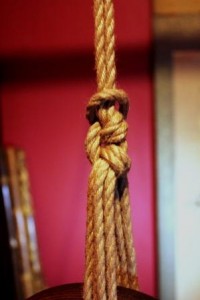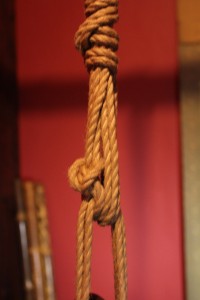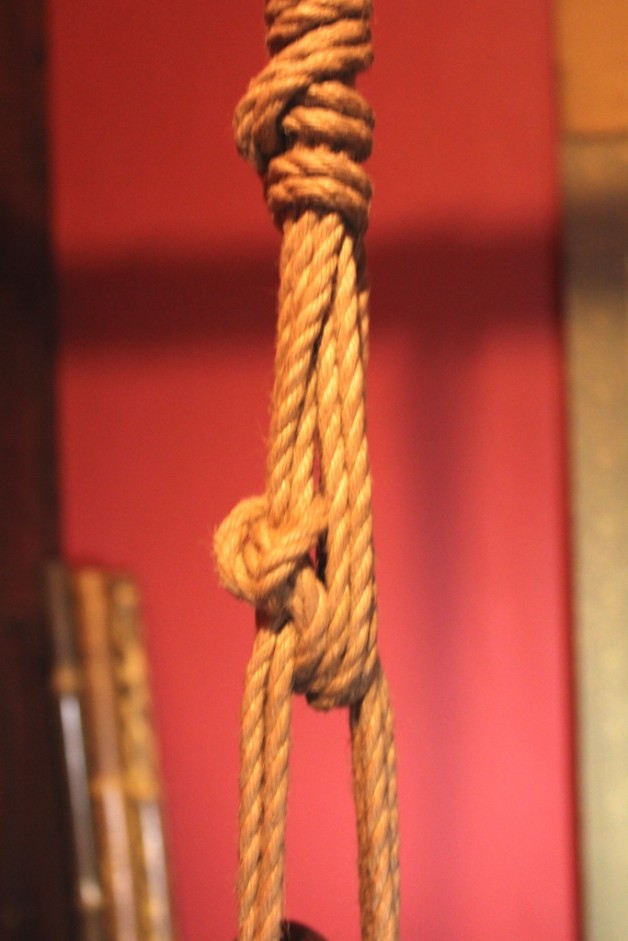It seems fairly common practice to run the suspension lines up to the ring or karabiner and then back through the bight where it comes off the knot, depending on how much rope is left, this might be repeated several times. This means that the bight carries a high load on a single strand (see photo below) and is also subjected to ‘sawing’ as the rope is pulled through. Weakened rope doesn’t break tantalisingly thread by thread like on the movies. I’ve tested it; once it starts to go, you are unlikely to get any warning and it will go all of a sudden. This is one very good reason to keep an eye on wear and retire any ropes that look past their best. [private]

You’ll notice with your ropes how the bight exhibits the most wear. This will eventually become a weak point and a potential source of failure. I haven’t heard of it happening but I don’t want to be the to have a main suspension line failure. Bob from Ropemarks says the rope he personally “uses has a breaking strengh of 50-60Kg, doubling that rope (making the bight) can easily reduce this number to half (25-30Kg). If you use this bight for suspension you have a very dangerous weak spot, especially with the average European sized women/men. If you use this bight for suspension you have rope on rope friction there. I’ve tested my rope and I can “saw” through it in 15-20 heavy-duty-pulls.”
So, there seems to be a very valid for a more secure method for the main suspension tie/s where failure would be disasterous. Osada Steve showed me an excellent solution. The suspension line is attached in the normal way but the loop at the bight is kept just big enough to allow you to pass the knotted ends through to lock off the tie. This can be seen below:

The line is then run through the ring or karabiner and passed under the limb or body harness connection (see below).

For the secondary ties, legs in most cases, I think it slows you down without a major benefit and you cover up the wrap which I don’t like aesthetically, assuming one has to double back the rope thru the wrap. That said, I have seen Randa Mai use this technique on ankle ties and it is all a matter of taste for less critical ties. [/private]

